
by AmyPlano | Jun 27, 2019 | General information about PCOS, PCOS Breakfast Foods, PCOS snacks
Who the heck does not like yogurt ? After all the possibilities for its use are endless! It can be used as a base in parfaits, smoothies, soups, pancakes, and can even pinch-hit for sour cream. It is rich in protein and calcium and also contains potassium which is important for ♥ health. Yogurt also contains live, active bacteria cultures. These active bacteria cultures are also known as probiotics and are great for maintaining a healthy gut and digestive system. However, with so many choices choosing the best yogurt can be challenging to say the least!
Navigating the grocery store in search of can be tricky! Need some help grocery shopping? Check out my article on that very topic! I was in Shop Rite the other day and I kid you not – the yogurt aisle almost spans the entire length of the dairy aisle. I remember back in the day – the only two choices were Yoplait and Columbo . There were no flips, dips or cherry pie-flavored yogurts. Just the normal variety of boring flavors like vanilla, peach and strawberry.
Now a days there are SO many different options to choose from. Greek, traditional, flavored, plain, fruit filled, and varying percentages of fat are all factors to consider when buying yogurt. But what do these terms all mean? What is the best one in light of all these choices? Let’s get to the bottom of this madness asap!

What percentage fat yogurt should I buy?
This question is tough. In all honesty – it depends on your #dietarygoals are as well as your overall health.
If you have high cholesterol or are just trying to keep your calories on the low side then choose either a low-fat (1%) or fat-free (0%) variety. These two choices generally have the lowest calorie value and contain a nominal amount of saturated fat. Look for labels that have the lowest amount of saturated fat.
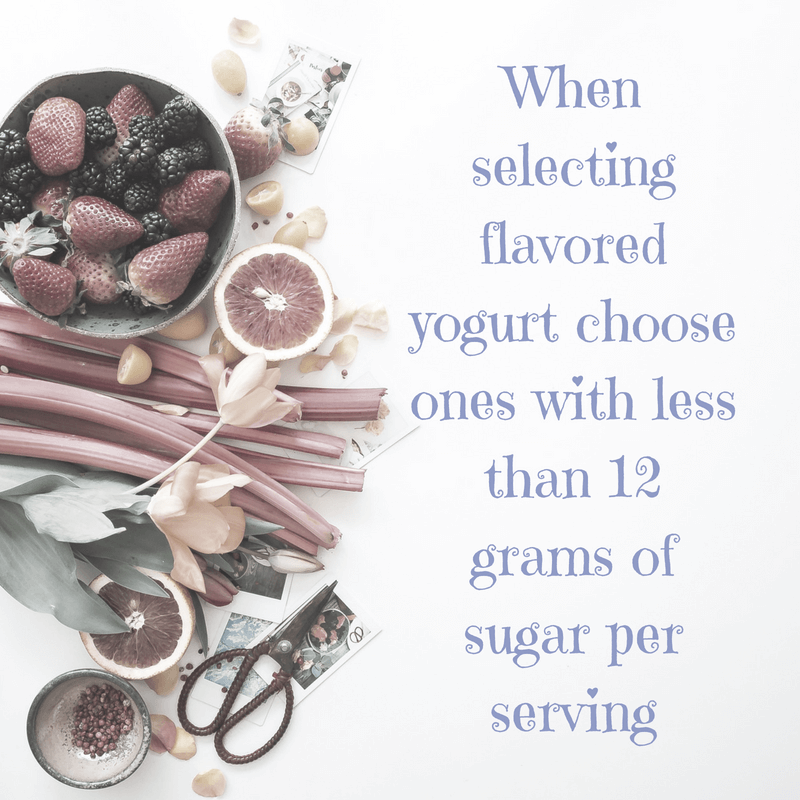
However, if your cholesterol is not an issue and you are just looking for a yogurt with a thicker consistency then opt for a 2 % or full-fat kind.
I personally prefer 2% or full-fat plain yogurt. My favorite traditional brands when I can find them (please don’t laugh 🙂 ) are YoBaby Whole Milk Plain Yogurt or Liberte Plain 2 % Yogurt. Shop Rite generally carries the YoBaby. But lately I can only find the plain Liberte yogurt at Whole Foods. The reason why I like these brands is # 1 (and most important) they taste pretty darn good ! And # 2 both brands contain under 10 grams of sugar. Also they have no added funky ingredients.
Which is best: Greek or traditional ?
Greek yogurt is strained which makes it thicker, creamier, and smoother than traditional kind. When comparing Greek and traditional yogurt, Greek has around double the protein but does have less calcium than traditional kind. Both the Greek and traditional varieties are usually well tolerated by individuals with lactose intolerance. However, the Greek type has less lactose (than traditional) and may be better tolerated than traditional yogurt. Most people prefer Greek to traditional yogurt because of the higher protein content.
Nowadays pretty much every major brand has both a traditional and a Greek yogurt. Even Chobani who started out their career just selling Greek now has a “old-fashioned non-Greek traditional smooth yogurt”. Therefore, you can be brand loyal and still get your pick of the litter!
However, please don’t fret if you just don’t love Greek yogurt! Many of my patients don’t like it and prefer the traditional style instead. Keep in mind – the average American consumes more than their daily requirement for protein. So if you opt for the non-Greek variety you will not be selling yourself short in meeting your protein needs.
Favorite Greek yogurt brands
For the Greek yogurts I personally bounce around brand wise depending upon what is on sale and has the lowest amount of sugar per serving. I shop mostly at Trader Joe’s. But unfortunately (aside from their ‘plain’ Greek) they do not carry a whole bunch of options under 10 – 12 grams of sugar. Some of the Greek style brands in my fridge now are Siggi’s Greek – 2 % Black Cherry, Fage Yogurt-2% plain, and Chobani Plain Whole-Milk Greek Yogurt.
Should I buy plain, flavored, or fruit filled yogurt?
One of the major issues with yogurt is it often has added sugars. It is made from milk (duh!) and therefore has naturally occurring sugar in it, called lactose. Thus, if you look at the nutrition label of plain yogurt, you will notice it has 12 g of carbohydrates. Since this sugar is naturally occurring, it is not of concern. However, what is concerning is the large amount of added sugars in many yogurts. A serving of flavored yogurt can contain an upward of 30 grams of sugar depending on the brand. That is a wholelata sugar! A can of soda has about 24 grams of sugar so the comparison is clear.
How to dodge the sugar
You can skip the added sugars by buying plain yogurt. Then you can be creative and add your own fruit and flavors such as cinnamon and vanilla. Hello fancy pants! You can even go nuts with different extracts such as almond, coconut or coconut to pump up the flavors without the calories or carbs.
When you buy the flavored variety, check the nutrition label and try to buy a containing less than 12 grams of sugar per serving. Some of the brands with the lowest amount of sugars including Dannon Oikos Triple Zero, Chobani Hints, and Siggi’s Greek mentioned above.

Trying to decrease your overall sugar intake? Choose plain yogurt and add your own fresh fruit #squadgoals
Navigating the yogurt aisle used to be challenging! But now, you should be able to navigate the dairy aisle with ease. Opt for low sugar yogurts that fit your dietary goals, budget and taste palate. Selecting an appropriate yogurt should now be pretty easy!
As always, if you have a question bring the nutrition label to your nutrition visit and the dietitian can review it.
What is your absolute favorite one on the market? Tell us what you think in the comments below.

by AmyPlano | Jun 23, 2019 | PCOS and carbohydrates, PCOS and Weight Gain
Did you know there are over 50 DIFFERENT names for added sugar ? Now, that is KRAZY with a capital K!
And let’s be crystal clear – I am NOT talking about the type that naturally occurs in fruits, veggies, whole-grain products as well as in dairy. We are talking about the sugar that is added to food during processing to enhance flavor, texture and shelf life.
Added sugar is typically composed of the either glucose, fructose and/or sucrose. Unfortunately, many food manufacturers are sneaky and hide the total amount by listing it under several different names on a package’s ingredient list.
As if reading labels wasn’t hard enough to begin with!
Any look familiar?

However, sadly the list does not end here my friends. Check out this quick article from Healthline to learn about the 56 (yes, you read that correctly!) other names that sugar goes by.
Talk about an unsavory alias!
Do any of these surprise you?
Raise your hand if you thought agave was a better choice than white sugar?
Surprised to hear that coconut sugar is a “no-go”?
That leads us to the next important question.
How much added sugar are you allowed per day?
Survey says…

But let’s not sweat the small things. Whole foods like fruits, veggies, whole-grains and dairy products naturally contain small amounts of sugar. However, they are also nutrient powerhouses brimming with fiber, vitamins, minerals and phytonutrients. With these added features, whole foods are processed differently and don’t have the same detrimental effects of added sugars.
Therefore, the most effective way to reduce your added sugar intake is to J.E.R.F. – just eat real food. Plain and simple.
However, if you do decide to buy packaged foods, don’t be a slave to label. Be an informed consumer and stick to your daily quota.
Got questions on added sugars? Hit us up in the comments below. We understand this topic can in fact be tricky and we are happy to help!
Hugs & High Fives,

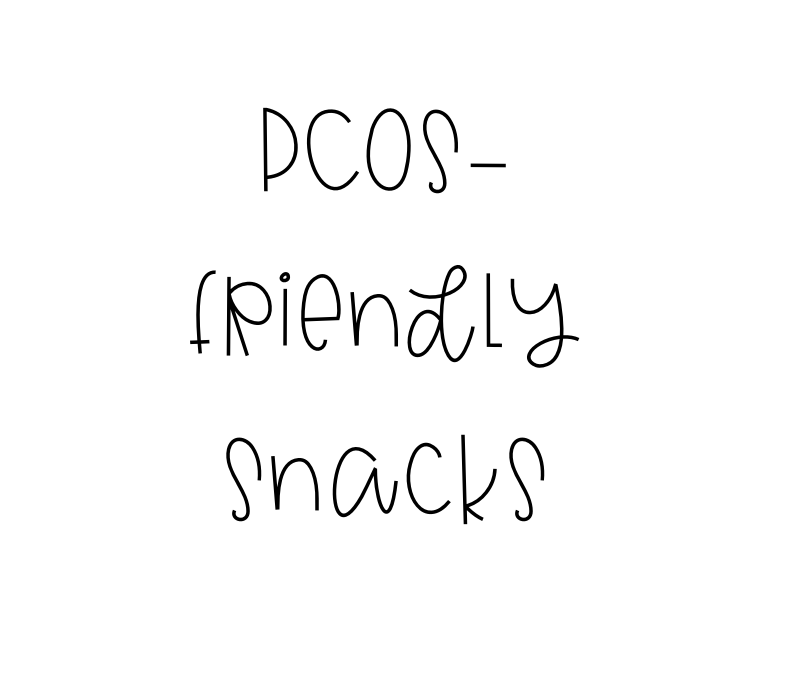
by AmyPlano | Jun 19, 2019 | PCOS snacks, Uncategorized
PCOS-friendly snacks
I confess. I am a snacker at ♥. I know some people just don’t snack. They eat their 2-3 main meals per day and nothing in between. I my friends am NOT that girl. However, throw PCOS into the mix and snacking can become somewhat daunting! However, I have got you covered today with some easy-peasy PCOS-friendly snacks.
Often I prefer to have snacks rather than meals. But not just one or two snacks. More like a personal ‘buffet’ of all things snacky. You see, my husband is not a snacker. Because well, tough guys don’t snack. Hee Hee! SO any and all snacks in the house are for me, myself and I.
A little guac, some hummus, a couple bites of scrumptious cheese, some raw veggies and maybe even a couple spoonfuls of full-fat Greek yogurt. That sort of stuff just makes my heart smile. It is like a party – but I am the only one there. After all, snacks are delicious. Right? I am just sayin’.
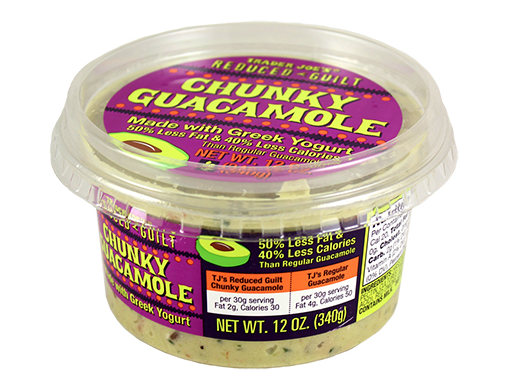
Trader Joe’s Guiltless Guacamole – one of my all time favorite PCOS-friendly snacks
Therefore, as a Registered Dietitian you probably don’t find it odd that I get tons of questions about snacks. I was trying to think if I could come up with a universal guideline when it comes to snacks. Then it hit me – mid ‘buffet’ line at my very own house: snack from the fridge NOT your cabinets.
Get Your PCOS Snack On
Fruit, veggies, yogurt, single-serving hummus & guacamole, cheese, and even leftovers are all super-duper healthy snack-a-roonies that all live in your refrigerator. Compare them with the snacks like chips, crackers, sweets and treats that typically reside in your kitchen cupboards. Therefore, looking to your your fridge when you get the munchies should be a no-brainer!
Set yourself up to succeed with healthy snacking by being proactive. Stock your refrigerator with healthy (and delicious!) options and make a solid effort to prep them ahead.
Wash and slice fruits and veggies BEFORE you even put them away when you return from the supermarket. Rock your Instapot to hard boil a half a dozen eggs. Can I say game changer! Or if you are super lazy grab some precooked hard boiled eggs from Traders. And no – they are not as sketchy as you might think. Stash leftovers in single-serving clear containers (so there is no guessing what is in them!). No leftovers? Pick up a ¼ pound of chicken or tuna salad from the deli. Both make for delicious snacks. Buy single servings of cheese like Baby Bels, mozzarella sticks and Laughing Cow. Then arrange your refrigerator so the healthier foods are front and center, making it more likely that they’ll be the first thing you reach for when you’re hungry.
Easy peasy! Now sit down and high five yourself. You worked hard. No get yo’self a snack.
Hugs & High Fives,

P.S. Never. Ever. Ever. Grocery shop when you are hungry! Here is actual footage of my cart at Trader Joe’s last week.

Dietitian Disaster!
I kid you not! There is pretty much about $150 worth of snacks in that cart ♥ At least I bought bananas, right? Even dietitians have less than stellar days!
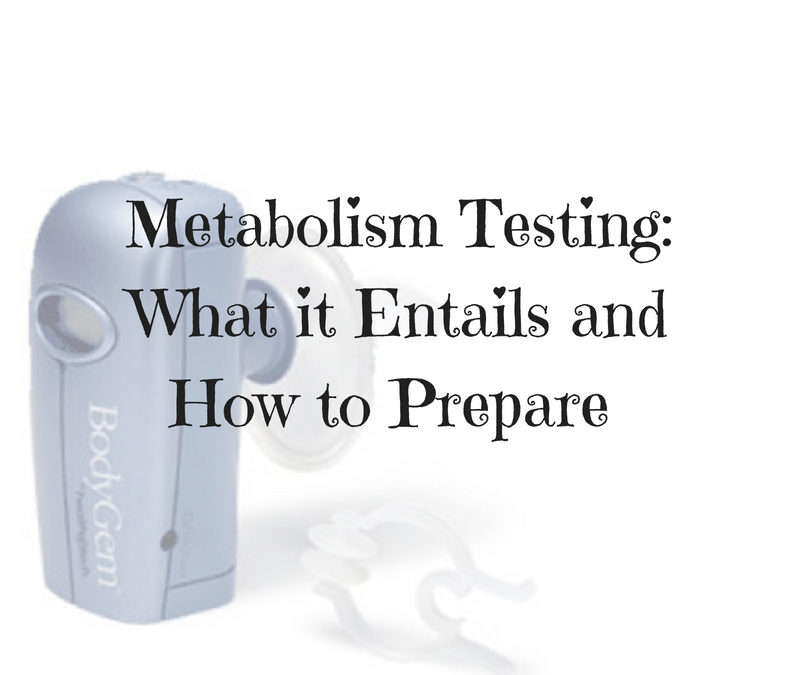
by AmyPlano | Jul 9, 2018 | PCOS and metabolism, Uncategorized
What is metabolic testing ?
The million dollar question on everyone’s mind, “what is metabolic testing ?” Many people have heard the term but have no clue what to expect when they come in to have their metabolism tested. The goal of this blog is to clarify this information and tell you exactly how to prepare for the testing to ensure the best results.
Trust me – there is absolutely nothing remotely scary about having your metabolism tested. Think about it like a walk in the park compared to things like a oral glucose challenge or the fun 18 viles of blood you had pulled for your PCOS panel. In fact – I can almost guarantee you will be skipping out of my office with the new information in hand like a kid on Christmas day.
First things first, metabolism testing does not hurt. I promise! We don’t draw blood. Also there is NO physical exertion involved. In the past, I have had patients show up in their workout gear thinking they were going to participate in something that might resemble a stress test. This is certainly not the case. So no worries you can leave your running shoes at home!
The device we use to measure your metabolism is called the Bodygem. This device measures your metabolism by capturing the air you breath.
Sounds pretty easy? Well it is.

Three things to do to prepare for the metabolism test:
Come fasted with no caffeine in your system for 4 hours prior to your test. You can drink plenty of water though!
Please don’t exercise within 4 hours of the test.
Arrive not having smoked a cigarette within 4 hours of the test.
Caffeine, exercise, and nicotine all can slightly increase your metabolic rate. Therefore, we do our best to minimize these variables so we can deliver you the most accurate results.
Curious about what other factors might influence your metabolism? Check out last week’s informative blog “RMR Testing 101” on this exact topic.
The actual test
Once you arrive we will get you all set up! You will sit peacefully in a chair with a small mouth tube in your mouth and a cute little nose clip on. The goal of the nose clip is to create a vacuum seal so no air escapes.
I promise, I will not post any Facebook pictures with your sexy nose clip on:)
By measuring both the amount of oxygen you exhale and the amount of carbon dioxide you expire we are able to calculate your metabolism. It’s that simple. This method is called indirect calorimetry and is one of the most accurate ways to measure metabolism. The test itself takes about 10 minutes.
Like I mentioned, the test does not hurt. However, some people find it uncomfortable as you need to breathe through your mouth for the duration of the test. However, I am pretty sure you have been through worse.

Once the test is complete we need to talk goals. Generally speaking most patients with PCOS only have one goal – to lose weight. Therefore, the next step will be to weigh you and test your body fat. That way we have a starting point for you to gauge your progress.
Next, we will gather your demographics. Factors such as your age, sex, occupation, type and frequency of exercise, and even your sleep patterns are all important variables in determining an appropriate calorie level for your goals. All this information is then entered into a software program which then generates several important numbers.

The Bodygem tells us the following:
Exactly how many calories you need to take in on the days you workout
Exactly how many calories you need to take in on your non-training (rest) days.
How you compare to other individuals with the same demographics
Your BMI
Once we have this important information I can then specifically tell you where your calories need to be to accomplish your weight loss goals. I can also make suggestions on your macros if that is something you are interested in. If you need help setting up these numbers in a tracking program like MyfitnessPal I am happy to help guide you as well.
If you need additional services like a customized meal planner with specific meal suggestions or guidance on how to incorporate carbohydrate cycling or intermittent fasting these can all be provided at an additional fee.
The entire metabolic test plus the consult should take no longer than 45 minutes. You will leave with a personalized print out with your results and a solid knowledge of what is metabolic testing really entails. No guesswork involved!
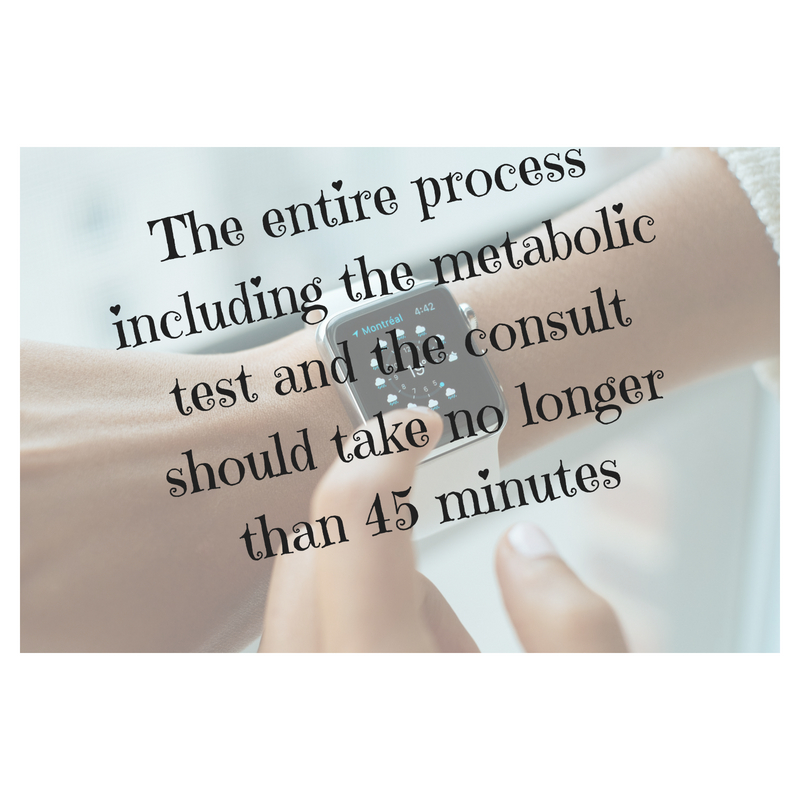
On next week’s blog we will dive deeper into the results. We will interpret the results of three actual Bodygem results and discuss how to apply the information. So now when someone asks you the question, ” what is metabolic testing ” you will be able to give them a A+ answer 🙂
P.S. The icing on the cake is if you purchase the metabolism test during the month of July you will be entitled to a 40 % discount for my birthday. Just use coupon code thisis40 when you schedule your metabolism test on www.amyplano.com to receive the discount. However, act fast as this discount will only be around until July 31, 2018.
Have questions on metabolic testing? Please don’t be shy! Ask in the comments section below.
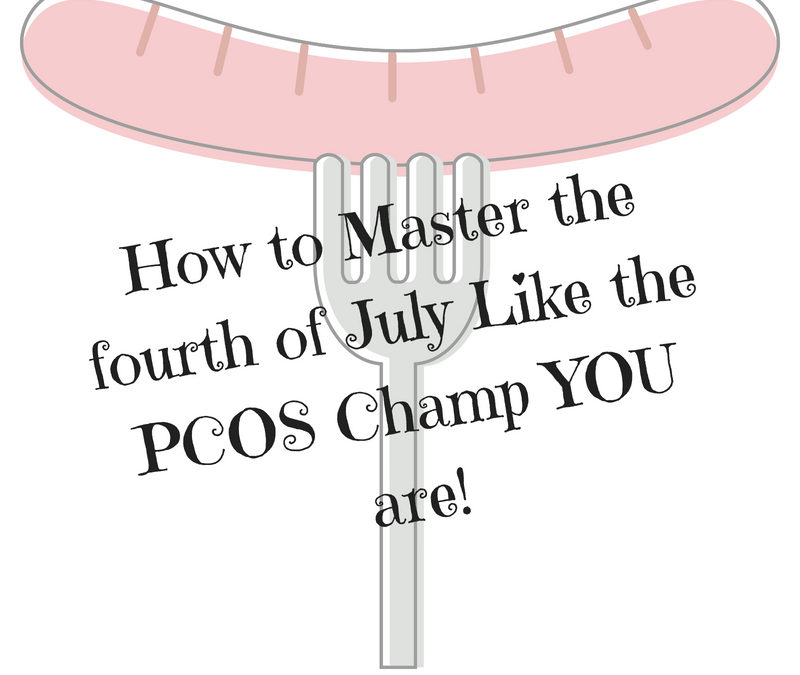
by AmyPlano | Jul 2, 2018 | General information about PCOS, PCOS friendly recipes
Between the crazy highs and unseasonably low temperatures this past week in CT (and freakish Tornadoes) it is hard to believe the fourth of July is just around the corner. However, before you know it, people will be firing up their grills and breaking out the dogs and burgers. Rather than throwing caution to the wind and deciding you’ll jump on the latest detox diet Tuesday, why not stay ahead of the game? There are plenty of ways to keep your holiday healthy, tasty and PCOS friendly for sure!
Sip Responsibly on the fourth of July
Yes – I know this a no brainer! But seriously the fourth of July seems like just like on other reason to carry on with summer drinking. As if people need a reason to drink, right? However, if you are going to imbibe then why not choose to do so responsibly.
Numero uno – avoid the carb bombs. Margaritas, frozen drinks and unfortunately the likes of craft beers tend to be very calorie and carbohydrate heavy. While Craft beers range in calories most clock in at about 200 – 250 calories per 12-ounce bottle. Thinking about knocking back 2-3? You are looking at an upward of 600 calories in alcohol alone.
Side note – back in the day when I used to bartend I would start my shift by making 5 gallon tubs of margaritas. In each batch I would put two full pounds of quick dissolve sugar! Yes – holy moley is right! Sugar rush for sure.
Instead, opt for clear spirits like vodka, gin, and rum mixed with a no/low-calorie mixer. For example, a Titos and Club Soda will only set you back about 95 calories. Plus did you know flavored vodkas (think Stoli Raspberry, Absolut Melon, Pinnacle Whipped Cream) have the same amount of calories as plain vodka? So you can even get fancy and mix a flavored vodka with a flavored club soda squeeze some lime on top and there you have your new favorite skinny summer cocktail.
Looking for the ultimate guide for alcohol and PCOS? The PCOS Dietitian has got you covered! Check out this blog and all things alcohol and PCOS.
Or if hard liquor is not your style – choose a light beer and you are only looking at about 100 calories as well. A glass of white or red wine is about 150 calories. Want to cut those those calories in half? Make yourself a wine spritzer! Fill a wine glass with crushed ice. Then pour 2-3 ounces of wine and 3-6 ounces of your favorite seltzer into a wine glass. Top with sliced fruit. Whallah!
Are the above options not really your jam? How about a low-calorie mojito? Coconut Water and Champagne Punch anyone? These low calorie cocktail from Proof are perfect for those watching their waistline. And let’s be honest – who IS NOT watching those waistlines even on the fourth of July!
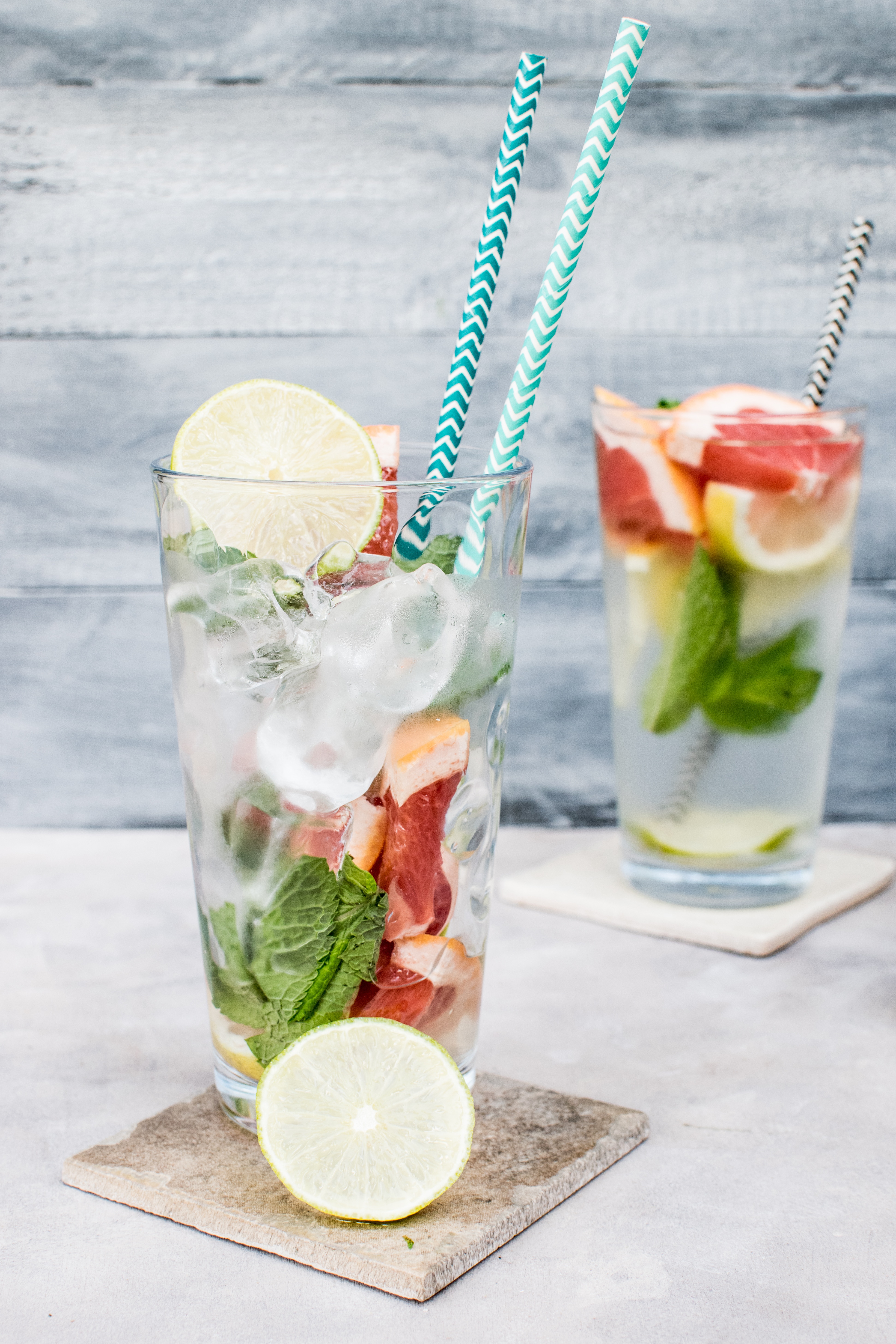
Who says cocktails have to be unhealthy? Not this RD.
Photo by: Monika Grabkowska
Want more information about the calorie counts of your favorite beverages? Check out one of my recent posts on this very topic!
Pump up the Veggies
Often at picnics there are more veggies available than one might think. Sometimes you just need to do a little searching. Crudite platters, tossed salads and even the infamous toppings for burgers are all good places to get those veggies i
Are you trying to watch your carbs? Why not try a lettuce wrap instead of a bun? After all, if 5 Guys offers this option it has to be good, right? You can save yourself 200 calories and 30 grams of carbohydrates by this simple little swap.
Does the green salad look a little weak? Why not grab some of the ‘fixins’ for the burgers (think lettuce, tomato, onions) and ‘doctor’ up the salad (on your own plate, of course!) Or even better yet – offer to bring a kick-ass salad or some sort of veggie based side. Both options often require very little prep aside from assembly. This way you know you will have something to round your plate out aside from Grandma’s tuna mac salad 🙂
Don’t go Hungry
This rule holds fast for any type of celebration including the fourth of July. Never. Ever. Ever. Go to an event hungry.
I repeat. Never. Ever. Ever. Go to an event hungry.
Most of my patients head to an event like a Memorial Day picnic with the mentality they are going to save all their calories for the day for one big meal. They plan to white- knuckle it the whole day until they get to the picnic. This backfires HARD pretty much every time. As soon as they see the food they everything short of bury their face in pretty much everything and anything that is out.
Instead plan accordingly. Have a light breakfast or snack prior to the picnic. Scrambled eggs and fruit, greek yogurt with 1-2 tablespoons of granola, an apple with peanut butter or something even as small as nuts or a cheese stick will keep your hunger at bay.
I much rather see you spend more time on the ‘front end’ in preparing than leave the picnic feeling big, bloated and polluted with an underlying sense of guilt. We all know this feeling! But YOU are stronger than this. Don’t allow yourself to be defeated. Instead plan ahead like the champ you are and leave the picnic with your rock-star status intact.
Keep it Lean and and No one will be Mean
Be a lean mean grilling machine on the fourth of July. After all, nobody goes to a BBQ saying, “I cannot wait to eat super sloppy BBQ food.” If you are the grill master instead choose lean cuts of protein to throw on the coals. Your guests will thank you!
Think 93 % lean ground beef, flank steak, grilled chicken breast marinated in a little balsamic, rosemary and oil, or even a veggie burger (just watch the sodium on those puppies some brands are crazy high!)
Truth bomb – many people opt for a turkey burger thinking it is the best choice. Best as we know is a relative term. Well, it’s not a horrible choice but is it the best choice? I am not so sure.

Did you know that beef burgers and turkey burgers often contain the SAME amount of calories and fat?
Did you know a turkey burger made from “LEAN” ground turkey has just about the same amount of calories and fat (150 – 170 calories & 7 -10 grams of fat for a 4 oz. patty) as a burger made from ground sirloin (93 % lean ground beef)? Lean ground turkey is generally a mix of light and dark meat. So if you are craving a nice juicy burger but are feeling guilty about eating red meat please don’t!
The only exception from a ground turkey standpoint is when the package states “EXTRA” lean. This type of ground turkey has virtually no fat, is expensive and in my humble opinion does not taste very good. It is certainly not good for burgers on the grill. With virtually no fat the burger will be unfortunately very dry.
Be a Good Friend
From my experience as someone who loves to host parties and tells everyone NOT to bring anything – never believe the host. They lie. I love it when someone brings something. SO be that good friend and come bearing food 🙂 This is your prime opportunity to bring something healthy that everyone (including yourself) will likely enjoy.
I can’t tell you how many times my patients say, “There was nothing healthy to eat so I had to eat crap.” Really? Come on my friend. No need to be so lazy! Get off your little butt and avoid all those excuses.
Remember it does not have to be something fancy, complicated or expensive. Heck stop at Costco and grab a veggie platter for $9.99 or a simple fruit bowl (also may I add for only $9.99 at Costco). Even a big old tub of hummus with a bag of baby carrots will likely be appreciated. Pick up a whole watermelon and bring that! After all, who doesn’t like juicy watermelon? The list of healthy options you can bring are seemingly endless.

Want to step up your grame? Why not make a killer salad with everything but the kitchen sink in it? That way you can take whatever comes off the grill and and throw it on top of the salad. You will be surprised how many guests will follow suit. Because like I said, even though Memorial Day is typically synonymous with unhealthy foods, it does not have to be. More people than not are working hard to improve their health. Give people a handful of healthy options and they will thank you for it. A little effort goes a long way!
So whether or not it feels that way right now – the fourth of July is HERE. While I am by no means asking you to be a saint (what fun would that be?) – why not start the summer season on a good foot? You have worked SO hard all winter. Let’s go into summer strong!
Did you survive the fourth of July like a champ? What are your tried-and-true tips for a healthy summer holiday weekend? Leave your favorites in the comments below!




















